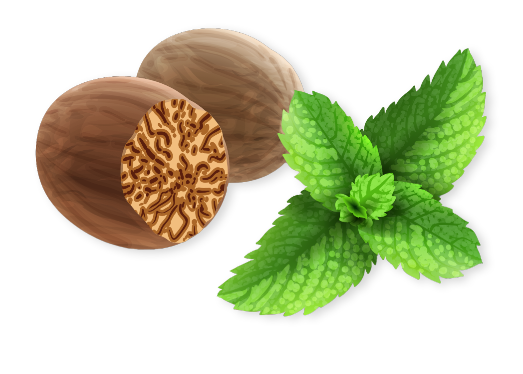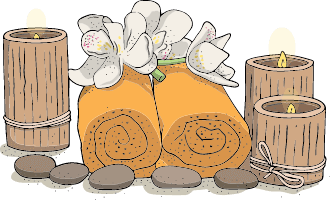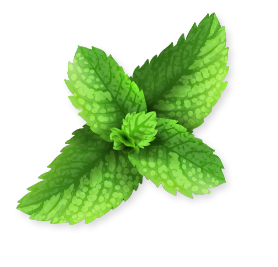Panchakarma – An In-depth Guide
Monday, April 17, 2023- What is Panchakarma?
- Ayurvedic Principles
- Three Doshas: Vata, Pitta, and Kapha
- The concept of ‘Balance’ in Ayurveda
- Panchakarma Stages
- Panchakarma Benefits
- What can you expect from Panchakarma Therapy?
- Can you do Panchakarma at Home?
- How much weight can you lose with Panchakarma?
- What does Panchakarma do for the body?
- Things to consider when preparing for Panchakarma
- Common Myths and Facts about Panchakarma Therapy
- Roots of Panchakarma in Kerala
- Yoga and Meditation in Panchakarma
- Ayurvedic Herbs & Oils in Panchakarma
- How to Choose a Panchakarma Retreat
- Duration, Cost, and Frequency of Panchakarma Therapy
What is Panchakarma?
Panchakarma is an ancient Indian ayurvedic therapy aimed at detoxifying the body and rejuvenating its vital energy. The term “Panchakarma” translates to “five actions” or “five treatments,” denoting the five procedures employed in this comprehensive therapy. Panchakarma is a holistic approach to wellness that purifies the body, pacifies the mind, and promotes spiritual growth.
The foundational concepts of Ayurveda, the tridosha (Vatta, Pitta, and Kapha), lay the groundwork for Panchakarma. These three doshas represent the biological energies found throughout the human body and mind. They regulate the physical, mental, and emotional characteristics of an individual. It is the balance of these doshas that lead to health and their imbalance or disturbance leads to disease. Panchakarma therapy is aimed at restoring the balance of these doshas, leading to overall well-being.
Ayurvedic Principles
- Holistic Approach: Ayurveda takes a comprehensive approach to health and wellness. It sees the individual as a whole, made up of body, mind, and spirit. The goal of Ayurvedic principles is to maintain this triad in harmonious balance.
- Prakriti (Constitution): According to Ayurveda, every individual is born with a unique constitution, known as Prakriti, which is determined by the proportion of the three doshas at the time of conception. Prakriti influences our physical traits, personality, and predisposition to certain health issues.
- Disease Process: Ayurveda views disease as the natural outcome when our doshas are out of balance for extended periods. It emphasizes prevention and treating the root cause of the disease rather than just alleviating symptoms.
Three Doshas: Vata, Pitta, and Kapha
- Vata: Governs all movement in the mind and body. It controls blood flow, elimination of waste, breathing, and movement of thoughts across the mind. Imbalance can lead to anxiety and nervous disorders.
- Pitta: Governs the heat, metabolism, and transformation in the body. This includes digestion and absorption of nutrients, body temperature, and intellect. Imbalance can lead to anger, ulcers, and inflammation.
- Kapha: Governs the structure and lubrication in the mind and body. It controls weight, growth, lubrication of the joints, and immune response. Imbalance can lead to lethargy, weight gain, and congestion.
The concept of ‘Balance’ in Ayurveda
Ayurveda defines health as a state of balanced bodily systems, mental clarity, and spiritual awareness. When the doshas are in balance, we are healthy; when they are out of balance, disease can occur. Panchakarma is the ultimate mind-body healing experience for detoxifying the body, strengthening the immune system, and restoring balance and well-being. It aids in the elimination of toxins, purifies tissues, and restores balance to the bodily systems. It’s a powerful tool for maintaining and restoring harmony in our physical and emotional health.
Panchakarma Stages
The therapy of Panchakarma is a carefully structured process that necessitates the guidance of experienced Ayurvedic practitioners. The process unfolds in three stages:
Stage 1 – Purvakarma
Purvakarma is the first phase of Panchakarma, and it involves preparatory procedures designed to soften and mobilize the body’s toxins.
- Deepana and Pachana: These are the preliminary dietary practices undertaken to stimulate the digestive fire (Agni) and prepare the body for the detoxification process. They involve the intake of easily digestible foods and certain herbal preparations.
- Snehan (Oleation): This is an important preparatory procedure involving internal and external oleation.
- Internal Oleation: This involves consuming medicated ghee or oil for a specific number of days. This procedure helps to mobilize the toxins from the tissues and direct them towards the gastrointestinal tract.
- External Oleation: This is performed through Ayurvedic massage (Abhyanga), where medicated oil is massaged onto the body. It helps to soften the tissues and allows the toxins to move towards the gastrointestinal tract.
- Internal Oleation: This involves consuming medicated ghee or oil for a specific number of days. This procedure helps to mobilize the toxins from the tissues and direct them towards the gastrointestinal tract.
- Svedana (Sweating): This procedure follows Snehan and involves inducing sweat with the help of steam. It further aids in loosening the toxins from the tissues. Svedana can be performed locally or for the entire body, depending on the individual’s needs.
By effectively preparing the body, Purvakarma ensures the maximum release and expulsion of toxins during the main phase of Panchakarma. However, these procedures should always be undertaken under the guidance of an experienced Ayurvedic practitioner for safety and efficacy.
Stage 2 – Pradhanakarma
Pradhanakarma refers to the main phase of Panchakarma that includes five cleansing procedures designed to eliminate accumulated toxins.
- Vamana (Therapeutic Emesis): This procedure is mainly designed for people with high Kapha dosha. Under guidance, the individual is made to drink a specific medicinal preparation that induces emesis, expelling excess mucus and Kapha-related toxins from the body.
- Virechana (Purgation): This procedure is primarily for individuals with high Pitta dosha. After taking a specific Ayurvedic medicine, the individual experiences controlled purgation, which helps in removing Pitta-related toxins from the body.
- Basti (Enema): This is considered the most important procedure in Panchakarma. Basti involves administering medicated oil or decoction into the rectum. It helps in removing Vata-related toxins from the colon, the main site of Vata dosha.
- Nasya (Nasal Administration): This procedure involves the administration of medicated oil or powder through the nostrils. It is particularly effective for disorders of the ear, nose, and throat, and helps to remove accumulated toxins from the head and neck region.
- Rakta Mokshana (Bloodletting): This is a less common procedure and is only recommended in certain conditions. Rakta Mokshana involves the detoxification of the blood and is used to treat disorders caused by contaminated blood.
Stage 3 – Paschat Karma
Paschat Karma or post-therapeutic measures are crucial steps that follow the main Panchakarma procedures. These steps help the body to recover and reestablish the normal physiological functions.
- Samsarjana Krama (Graduated Diet): This involves the gradual reintroduction of solid food to the digestive system, which has been sensitized due to the intensive cleansing procedures. It typically starts with easily digestible foods like rice gruel and slowly progresses to a normal diet over several days.
- Rejuvenation Therapy (Rasayana): After the detoxification, it’s essential to rejuvenate the body. Rasayana therapy involves the use of certain herbal preparations and dietary supplements that rejuvenate the body and mind, enhance immunity, and improve overall health.
- Lifestyle Modification: Following Panchakarma, individuals are usually advised to make appropriate changes in their lifestyle, including diet, physical activity, and mental health practices. These changes help to maintain the equilibrium of doshas and sustain the benefits of the Panchakarma treatment.
- Follow-up Consultations: Regular follow-up consultations with the Ayurvedic practitioner are usually recommended to monitor the post-treatment progress and make any necessary adjustments to the diet or lifestyle modifications.
Panchakarma Benefits
| Detoxification | Panchakarma helps cleanse the body of toxins (Ama) that have accumulated over time due to lifestyle factors, diet, and stress. This detoxification supports overall health and wellbeing. |
| Balance Doshas | By tailoring treatments to the individual’s constitution (Vata, Pitta, Kapha), Panchakarma helps balance the doshas, which are considered the foundation of health in Ayurveda. |
| Boosts Immunity | By cleansing and rejuvenating the body, Panchakarma strengthens the immune system, improving the body’s resilience against diseases. |
| Stress Relief | The treatments involved in Panchakarma, including massage and meditation, are effective stress relievers. Stress reduction promotes mental clarity and emotional balance. |
| Improved Digestion and Metabolism | By stimulating the digestive fire (Agni), Panchakarma enhances digestion and metabolism, which can lead to weight loss and improved overall health. |
| Skin Rejuvenation | The detoxification process, combined with specific treatments, promotes healthier skin. After Panchakarma, many people report improved skin texture and a natural glow. |
| Enhanced Energy and Vitality | By removing toxins, balancing doshas, and enhancing digestion, Panchakarma promotes an overall increase in energy and vitality. |
| Deep Relaxation | Panchakarma encourages deep relaxation, aiding in the release of deep-seated stress and promoting a sense of peace and well-being. |
| Promotes Healthy Lifestyle Choices | The Panchakarma process can help change dietary and lifestyle habits, steering individuals towards healthier choices that can be maintained long-term. |
| Improved Sleep | As Panchakarma balances the body’s energies and reduces stress, it often leads to better sleep patterns. |
| Slows the Aging Process | By strengthening the body’s immune system and improving overall health, Panchakarma can slow the aging process and enhance longevity. |
What can you expect from Panchakarma Therapy?
When you decide to undergo Panchakarma therapy, expect a holistic and transformative journey that doesn’t just cure symptoms but heals the body from the core. An Ayurvedic practitioner will first evaluate your dosha type and your overall health before creating a personalized Panchakarma plan.
You’ll undergo the preparatory treatments of snehan and svedana, which will involve massage and steam therapies. Following this, you’ll undergo one or more of the primary treatments, depending on your health needs and dosha imbalances.
Panchakarma treatments are often accompanied by herbal medications and a specific diet plan. You may also be asked to practice yoga and meditation, as Ayurveda considers the mind and body to be intricately connected.
Can you do Panchakarma at Home?
While certain Ayurvedic practices can be incorporated into a home routine, Panchakarma is a complex, multi-stage therapy that requires professional supervision. Some therapies, like medicated enemas or induced vomiting, need a careful dose and timing, which only a trained practitioner can ensure.
However, to continue the benefits of Panchakarma post-treatment, some aspects can be integrated into your lifestyle. These might include following an Ayurvedic diet, practicing daily oil massage (Abhyanga), and incorporating yoga and meditation into your routine.
How much weight can you lose with Panchakarma?
Weight loss from Panchakarma can vary greatly from person to person due to factors such as the individual’s constitution, the nature of their imbalance, their diet, lifestyle, and the specific therapies used during their Panchakarma process.
- Variable Weight Loss: It’s essential to note that Panchakarma is not a weight-loss program; rather, it’s a detoxification and rejuvenation regimen. Some individuals may experience weight loss as a byproduct of the therapy due to improved digestion and metabolism, but it’s not a guaranteed outcome.
- Digestive Fire (Agni): Panchakarma aims to stimulate and balance Agni – the digestive fire. When Agni functions properly, it aids in the efficient digestion, absorption, and assimilation of food, which can lead to weight loss over time.
- Elimination of Toxins: By removing deep-seated toxins from the body, Panchakarma can help improve metabolic functions, possibly promoting weight loss.
- Lifestyle Changes: Post-Panchakarma, individuals are usually advised to adopt a healthy lifestyle, including diet and physical activity changes. These modifications, if followed, can further contribute to weight loss.
- Personal Variations: Everyone’s body responds differently to Panchakarma. Some people might see a notable weight change, while others might notice more subtle shifts in their overall wellbeing, energy levels, and mental clarity.
What does Panchakarma do for the body?
Imagine your body as a bustling city. Now, every city generates waste, and if this waste isn’t dealt with properly, it starts to create problems, right? Similarly, our bodies, with all their complex processes, produce waste materials or toxins (referred to as “Ama” in Ayurveda). When these toxins accumulate over time, they can cause imbalances and lead to various health problems.
Now, enter Panchakarma, the body’s waste management system! It’s like a deep cleanse for your body, a bit like spring cleaning for your house. Panchakarma works to flush out these accumulated toxins, allowing your body to function more smoothly, just like clearing out all the clutter makes your home a more comfortable place to live.
But Panchakarma does more than just take out the trash. It also aims to balance the three doshas or energies (Vata, Pitta, Kapha) in your body. Think of these doshas as the essential workers of your city. When they’re all working together harmoniously, everything runs smoothly. But when one or more doshas become imbalanced, that’s when problems can start to arise. By balancing these doshas, Panchakarma helps to restore harmony in your body.
Panchakarma also pays attention to your mind and spirit. The therapies involved in Panchakarma, such as massage and meditation, can provide deep relaxation and stress relief. So it’s not just about cleaning up your physical body, but also about clearing your mind and rejuvenating your spirit.
Post-Panchakarma, you’re likely to experience a sense of lightness, increased energy levels, and improved health. Plus, the dietary and lifestyle changes encouraged during and after Panchakarma can guide you towards healthier habits, meaning the benefits of your ‘body-city’ cleanup can continue long after the actual therapy.
In a nutshell, Panchakarma is like a full-service tune-up for your body. It helps you get rid of the old, unhelpful stuff and makes room for the new, beneficial habits. It’s all about cleaning, rejuvenating, and balancing your body, mind, and spirit.
Things to consider when preparing for Panchakarma
Preparation is key to maximize the benefits of Panchakarma. Following these steps can help ensure that you’re physically and mentally ready to undergo this powerful detoxification and rejuvenation process.
- Consultation: Before beginning Panchakarma, have a detailed consultation with a trained Ayurvedic practitioner. They can help you understand the procedures involved, and how they might benefit your specific constitution and health status.
- Timing: Choose a time when you can fully commit to the process and when your schedule allows for relaxation and rest. Panchakarma can be intense, and you don’t want to rush through it or be juggling other major commitments simultaneously.
- Diet: Start adjusting your diet prior to the treatment as per your practitioner’s advice. Generally, it’s recommended to consume light, easy-to-digest, and warm foods.
- Hydration: Keep yourself well-hydrated. It helps in flushing out toxins.
- Avoid Stimulants: Limit or eliminate the intake of stimulants such as caffeine, alcohol, and nicotine, as these can interfere with the cleansing process.
- Mind-Body Practices: Engage in mind-body practices such as yoga and meditation, which complement the Panchakarma process by supporting relaxation and mental clarity.
- Set Intentions: Approach Panchakarma with clear intentions. This can be a powerful time for reflection and positive change, so consider what you hope to gain from the process.
- Follow-up Plan: Think ahead to the post-Panchakarma period and make a plan for how you’ll maintain the benefits of the therapy. This might include dietary changes, exercise, stress management techniques, and more.
Common Myths and Facts about Panchakarma Therapy
Myth 1: Panchakarma is solely a physical detoxification process.
Fact: While Panchakarma is indeed an intense detoxification process for the body, it also encompasses mental and emotional detoxification. Ayurveda considers the mind and body as interconnected, and Panchakarma aims to cleanse and rejuvenate both of them. The therapy helps in releasing accumulated stress, enhances mental clarity, and improves concentration.
Myth 2: Panchakarma is a cure-all therapy.
Fact: Although Panchakarma is an incredibly holistic therapy, it is not a one-size-fits-all solution for every ailment. It’s essential to have a detailed consultation with a trained Ayurvedic practitioner who can provide guidance based on an individual’s specific constitution and health conditions. Moreover, Panchakarma serves as a preventive and restorative therapy, but it should not replace conventional treatment for severe or acute conditions unless advised by a healthcare professional.
Myth 3: Panchakarma results in immediate weight loss.
Fact: Weight loss can be a byproduct of Panchakarma due to improved metabolism and detoxification. However, Panchakarma’s primary goal is not weight loss; instead, it aims to cleanse the body, balance the doshas, and improve overall health. While some people might experience weight loss during or after Panchakarma, it’s not a guaranteed outcome, and any weight loss is typically a result of improved health and wellbeing.
Myth 4: Panchakarma is only for sick people.
Fact: This could not be further from the truth. While Panchakarma is indeed beneficial for those suffering from various ailments, it’s also excellent as a preventive measure and a way to maintain and enhance overall health. Many healthy people undergo Panchakarma as a means of preserving their health and improving vitality.
Myth 5: Panchakarma is a quick fix.
Fact: Panchakarma is a comprehensive and intense process that requires significant time and commitment. Unlike quick detox programs, Panchakarma involves a series of treatments over several days or weeks. Moreover, its benefits are long-lasting and can lead to profound changes in one’s health and lifestyle.
Myth 6: Panchakarma can be self-administered at home.
Fact: As mentioned earlier, Panchakarma is a complex therapy that should be administered by trained practitioners. Some therapies involve careful dosing and timing, which requires professional expertise. However, certain Ayurvedic practices, like following an Ayurvedic diet or daily oil massage (Abhyanga), can be integrated into your daily routine at home.
By dispelling these myths and misconceptions, we can better understand the true nature and purpose of Panchakarma. It’s not a quick fix, a magic weight loss solution, or a replacement for conventional medical treatment. Instead, it’s a holistic wellness regimen aimed at restoring the body’s balance, promoting detoxification, and enhancing overall wellbeing. When done under the guidance of trained practitioners and tailored to an individual’s unique constitution, Panchakarma can be a powerful tool for health and rejuvenation.
Roots of Panchakarma in Kerala
- Birthplace of Ayurveda: Kerala is considered the birthplace of Ayurveda, the ancient Indian system of medicine that includes Panchakarma. The state has a rich tradition of Ayurvedic knowledge and practices.
- Climate: Kerala’s unique tropical climate, with consistent temperatures and ample rainfall, provides the perfect environment for growing a diverse range of medicinal plants used in Ayurvedic treatments, including Panchakarma.
- Panchakarma Centers: Kerala is home to numerous Panchakarma centers, ranging from luxurious resorts to traditional treatment centers. Many of these centers attract people from around the world seeking holistic healing.
- Experienced Practitioners: With a deep-rooted Ayurvedic tradition, Kerala has a high number of experienced and knowledgeable Ayurvedic practitioners, ensuring that Panchakarma treatments are carried out to a high standard.
- Government Support: The Kerala government actively promotes Ayurveda and Panchakarma. This support has helped maintain high standards in Ayurvedic education and practice, and also helped Kerala become a popular destination for medical tourism.
- Cultural Experience: Undergoing Panchakarma in Kerala not only provides the health benefits of the treatment but also offers an enriching cultural experience. From traditional Kerala cuisine, which aligns with Ayurvedic dietary principles, to the beautiful natural surroundings, it can be a holistic healing journey.
Remember, though Kerala offers a unique and authentic Panchakarma experience, it’s crucial to ensure that any center you choose follows recognized accreditation standards to guarantee safety and efficacy.
Yoga and Meditation in Panchakarma
- Complementary Practices: Yoga and meditation complement the physical cleansing of Panchakarma by promoting mental and emotional balance. They help to manage stress, improve mental clarity, and heighten body awareness – all crucial for the holistic healing Panchakarma aims to achieve.
- Yoga: The gentle postures (asanas) in Yoga can improve circulation, aid in digestion, and promote relaxation, supporting the detoxification process during Panchakarma. Yoga postures can be tailored to one’s dosha type to further enhance their benefits.
- Asana Selection: Not all yoga postures are used. The choice of asanas is tailored to suit the individual’s constitution, condition, and comfort level.
- Breathwork (Pranayama): Breathing exercises in yoga, known as pranayama, are used to balance the body’s energy, promote relaxation, and enhance the detoxification process.
- Asana Selection: Not all yoga postures are used. The choice of asanas is tailored to suit the individual’s constitution, condition, and comfort level.
- Meditation: The quiet introspection of meditation helps to calm the mind and balance emotions during Panchakarma. It promotes self-awareness and mindfulness, enhancing the overall benefits of the treatment.
- Mindfulness: In addition to formal sitting meditation, mindfulness practices are often integrated into daily routines during Panchakarma. This can involve mindful eating, walking, or simply being present during daily activities.
- Mantra Meditation: Mantras may be used in meditation to calm the mind and promote concentration. The specific mantra chosen can depend on the individual’s unique needs and constitution.
- Mindfulness: In addition to formal sitting meditation, mindfulness practices are often integrated into daily routines during Panchakarma. This can involve mindful eating, walking, or simply being present during daily activities.
- Integration into Daily Routine: Both yoga and meditation are usually integrated into the daily routine during a Panchakarma retreat, starting the day with gentle yoga and meditation, and often ending the day with restorative yoga and relaxation practices.
- Post Panchakarma: Yoga and meditation continue to be important post Panchakarma. They support the maintenance of balance and wellness achieved during the treatment.
- Guidance and Supervision: Yoga and meditation during Panchakarma should be performed under the guidance and supervision of trained professionals. This ensures safety, effectiveness, and alignment with the individual’s unique constitution and condition.
Ayurvedic Herbs & Oils in Panchakarma
- Purpose: Ayurvedic medicines are used in Panchakarma to stimulate the body’s natural detoxification processes, strengthen the immune system, and restore balance among the doshas. They are used before, during, and after Panchakarma treatment.
- Herbal Oils: These oils are used extensively in external treatments like Abhyanga (massage) and Shirodhara (head oil treatment). They’re tailored to the individual’s constitution, with specific herbs infused into a base oil. The medicinal qualities of these oils enhance the detoxification process.
- Herbal Decoctions and Powders: Used in both internal and external therapies, these medicines are designed to stimulate digestion, assist in eliminating toxins, and improve overall health. The ingredients and preparation are personalized to the patient’s needs.
- Rasayanas: These rejuvenating formulations are typically given after the main Panchakarma treatment to replenish the body and boost immunity. They’re known for their anti-aging properties and ability to promote vitality and longevity.
- Medicated Ghee: Consumed in the preparatory phase, medicated ghee serves to loosen deep-seated toxins in the body, facilitating their elimination during the main Panchakarma treatments.
- Nasya Oil: Used in Nasya therapy, this medicated oil is administered through the nostrils to cleanse the head and sinuses.
- Tailored Formulations: The strength, dosage, and specific formulation of Ayurvedic medicines are customized to the individual’s constitution, imbalances, age, and digestive capacity. This tailoring is a cornerstone of Ayurvedic treatment.
- Dietary Supplements: Certain Ayurvedic medicines are prescribed as dietary supplements during Panchakarma to aid digestion, reduce inflammation, and support overall health. These may include herbal tablets or churnas (powders).
- Safe Usage: Ayurvedic medicines are typically safe when administered under the supervision of a qualified Ayurvedic practitioner. They’re made from natural ingredients and usually have fewer side effects than many modern medicines.
How to Choose a Panchakarma Retreat
- Credentials of the Retreat Center: Make sure to choose a retreat center that has certified Ayurvedic professionals. Look for accreditations from recognized Ayurvedic institutions. This ensures the treatments you receive are safe and effective.
- Personalized Attention: Panchakarma is a deeply individualized process. The center you choose should offer personalized treatment plans tailored to your specific constitution and needs.
- Experienced Practitioners: Panchakarma involves complex treatments that require skilled hands. Make sure the retreat has experienced practitioners.
- Holistic Approach: The best Panchakarma retreats incorporate a holistic approach, offering yoga and meditation alongside the Panchakarma treatments.
- Quality of Ayurvedic Medicines: Check whether the center prepares its own Ayurvedic medicines or sources them from reputable manufacturers. The quality of the medicines greatly affects the results of the treatment.
- Environment: The surroundings of the retreat center play a significant role in the healing process. Look for a retreat in a tranquil, natural setting which aids relaxation and rejuvenation.
- Diet: Make sure the retreat center offers a diet that complements the Panchakarma process. Food should be fresh, nutritious, and prepared according to Ayurvedic principles.
- Reviews and Testimonials: Reading reviews and testimonials from previous guests can give you a good idea of what to expect from the retreat.
- Post Treatment Care: After completing Panchakarma, it’s important to gradually reintegrate into daily life. Choose a retreat that offers guidance on diet, lifestyle changes, and maintenance therapies after your stay.
- Budget and Duration: Finally, consider your budget and the time you have available. Panchakarma retreats vary in length and cost. Choose one that fits your financial and time constraints.
Duration, Cost, and Frequency of Panchakarma Therapy
The duration of Panchakarma treatment varies based on individual health needs, but a full treatment typically lasts between 7 to 21 days.
The cost of the treatment varies widely based on the location, the expertise of the practitioner, the treatments included, and the duration of the therapy. It’s always recommended to enquire about the costs beforehand.
The frequency of Panchakarma therapy should ideally be determined by a qualified Ayurvedic practitioner, as it’s based on individual health status and the nature of any imbalances present. However, as a general guideline, it’s often recommended to undergo a full Panchakarma cleanse annually, as a form of preventative care and overall health maintenance.
For individuals with specific health conditions, or those experiencing significant stress or life changes, more frequent sessions may be suggested. In some cases, Panchakarma might also be performed seasonally to prevent the accumulation of toxins and doshas, particularly when the change of seasons is likely to aggravate certain doshas.
Ultimately, the frequency should be personalized, and it’s essential to follow the advice of a healthcare provider or trained Ayurvedic practitioner in this regard. They can provide guidance based on a comprehensive understanding of your health and lifestyle.
Panchakarma is a powerful tool to balance the doshas, cleanse the body, and rejuvenate the mind. This ancient therapy offers a holistic approach to wellness, ensuring not just the absence of disease but a state of complete health and well-being. Whether you are dealing with a specific health issue or seeking overall wellness, Panchakarma can provide a comprehensive, personalized healing experience. Always remember to seek treatment from accredited clinics and qualified practitioners to ensure a safe and effective Panchakarma experience.
You can write to us.
BOOK APPOINTMENT



























